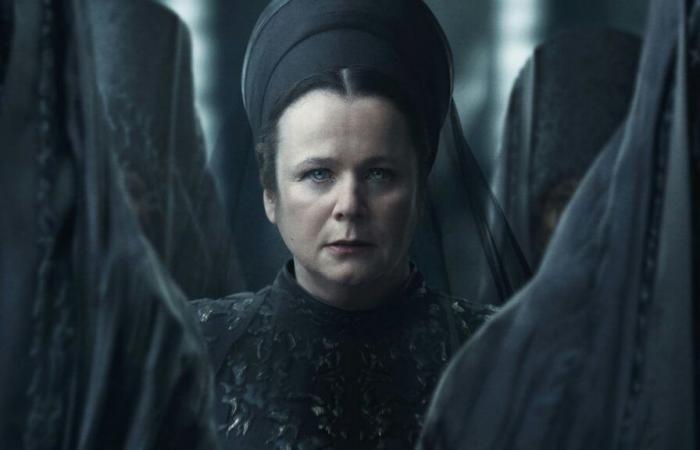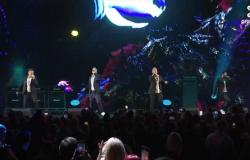This is a spoiler-free review of Dune: Prophecy’s first four episodes. The show premieres on HBO and Max on November 17, 2024, with new episodes airing Sundays through December 22.
Origin stories often suffer from over-explanation and demystification that detracts rather than adds to the fictional universes they’re trying to flesh out. So I was skeptical going into Dune: Prophecy, which aims to shed light on the formation and rise of the sisterhood pulling the strings at the center of Frank Herbert’s science-fiction epic (and its more recent movie adaptations). Part of what makes the part-nun, part-witch, all-powerful Bene Gesserit so captivating are the questions of how they operate, the extent of their abilities, and how they became what they are in the far-off future where humanity has colonized the stars and banned all “thinking machines.” Answering those questions is a tall task, and sadly Dune: Prophecy only sometimes rises to it.
What the series achieves in its first four episodes is the goal of any origin story: Illuminate new aspects of things we already knew, and contribute to the overall context and lore. Have your Captain America “I understood that reference” memes at the ready: Prophecy is constantly nodding toward Dune history and dropping familiar names, and that made a fun watch for this longtime fan. It’s also relatively faithful to the canon established by Herbert – though, like Denis Villeneuve’s Dune and Dune: Part II, it erases much of the Muslim and Arab influences prevalent in the novels.
On the page, all of this background information serves a deeper purpose: Herbert had lots to say about human nature, politics, and how the two interact, and used his sprawling creation to explore those ideas. But Dune: Prophecy only ever feels focused on the story at hand and its expansion of Dune lore. Don’t get me wrong: Rewinding to 10,000 years before the birth of Paul Muad’dib Atreides is an exciting prospect. Prophecy follows Valya (Jessica Barden and Emily Watson) and Tula Harkonnen (Emma Canning and Olivia Williams) as they lead a fledgling Sisterhood not yet known as the Bene Gesserit. It’s also about a century after the Butlerian Jihad (referred to here as “the war against the thinking machines”), which means humanity is still just getting back on its feet after ridding itself of all computers and artificial intelligences. The Imperium is in its infancy, and rife for Game of Thrones-esque power struggles. But Dune: Prophecy focuses on the Sisterhood itself, and the inner workings of it as its members struggle to agree on a path forward. The Empire isn’t completely left out of the story, but it and the elements around it are the series’ weakest, never really giving us much reason to care about Emperor Javicco Corrino (Mark Strong), his struggles in politics, or even the secret rebellion led by an Atreides ancestor (Chris Mason).
One place where Dune: Prophecy does have something to say is in the younger versions of Valya and Tula played by Barden and Canning. The sisters are the best parts of both the past and present-day storylines and perfect casting makes the transitions between eras nice and easy – but the more interesting material is in the flashbacks. Without going into spoilers, the feud between the Harkonnens and the Atreides goes back even further than Dune: Prophecy, and the effect that has on Valya and Tula’s early adulthood is much more intriguing than the political drama they’re later sucked into. Their origin is one of hardship, betrayal, and human nature, and it feels right at home within the confines of Dune.
Dune: Prophecy Official Images
Visually, it’s hard not to compare Dune: Prophecy to its older, big-screen siblings. Though Denis Villeneuve wasn’t directly involved with the production, his love for distinct color palettes and particle effects are present throughout episodes 1 through 4. It’s clear the TV show is trying to walk in lockstep with the movies, and while there are some creative images on display – especially in the moments of trippy space magic – the overall look and feel is flimsy despite the HBO of it all.
The seams of Dune: Prophecy are visible, and it can be distracting. Costumes appear lower quality; the sets, both digital and physical, look cheaper than those of House of the Dragon or The Penguin. And it doesn’t help that the acting can often feel stiff. It’s hard to compete with the examples set by Villeneuve and cinematographer Greig Frasier – two of today’s sharpest moviemaking eyes – or the mammoth budgets of their two Dune movies. It isn’t a fair fight, but it took me out of the moment on multiple occasions.
At its worst, Dune: Prophecy feels like a poor imitation of what the books and movies accomplish. At its best, however, the series offers a new look at a different era of Dune, allowing for an increased appreciation of the depth of storytelling in this fascinating franchise. There’s definitely something here in Dune: Prophecy, and every once in a while, it impresses and excites. It’s just that a lot of its story feels discombobulated and unfocused.






